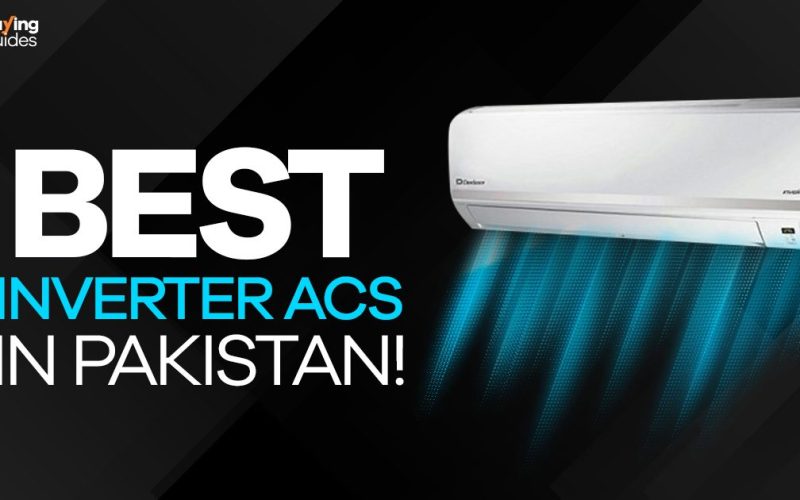Introduction
Confused about which air conditioner will actually cut your electricity bill without sacrificing comfort? Learn how to make a smart choice based on real-world factors not just flashy labels or promotions.
In Pakistan’s hot and humid summers, a reliable air conditioner is more than a luxury it’s a necessity. But running an old, inefficient AC can send your electricity bill through the roof and strain power supplies. That’s why selecting an energy-efficient AC makes both financial and environmental sense. With clear guidance on star ratings, proper sizing, inverter technology, and maintenance, you can stay cool while cutting costs. In this article, you’ll learn each step to choose the right AC for your home in Pakistan, ensuring comfort, savings, and peace of mind all year long.
Why Picking the Right AC Isn’t Just About Cooling
In Pakistan’s sweltering summers, buying an air conditioner is more of a necessity than a luxury. But with a wide range of models available—from basic units to inverter-based systems—many homeowners feel overwhelmed. Too often, people make decisions based on price alone or go with whatever the retailer pushes hardest.
The Hidden Cost of a Poor AC Choice
At first glance, an air conditioner may look like any other appliance—a box designed to cool your home. But under the hood, different systems behave very differently, especially in how they use electricity. Many older or low-end models consume far more power than modern inverter systems, which adjust their speed based on your room’s temperature.
But energy consumption isn’t the only problem. Poor installation, mismatched room sizing, and outdated technology can lead to a range of frustrations:
- Uneven cooling that leaves some rooms sweltering
- Frequent breakdowns during peak summer months
- Overworked compressors that shorten unit lifespan
- Rising electricity costs even with moderate usage
These aren’t just theoretical issues. Let’s take a real-world example from Lahore.
Case Study: How One Lahore Family Cut Cooling Costs by 38%
In 2023, the Iqbal family in Lahore’s Johar Town faced the same problem many households deal with—high electricity bills and an AC that struggled to keep up. They lived in a 5-marla double-story house, where the upstairs rooms turned into furnaces by afternoon.
Their old unit was a conventional 1.5-ton model, bought five years earlier. While it cooled initially, it ran continuously for hours, especially in June and July. The bills told the story: upwards of Rs. 22,000/month just from two AC units.
Frustrated, they called in a local HVAC technician. Here’s what changed:
- The old unit was replaced with a 1.5-ton inverter AC rated for 240V fluctuation resistance—ideal for Lahore’s grid.
- They sealed air leaks around windows and added reflective tint to reduce solar heat gain.
- The indoor unit was repositioned to improve airflow and reduce pressure on the compressor.
The result? The new system cooled faster, ran less frequently, and brought their monthly bill down to Rs. 13,600—a 38% reduction. Even better, the family reported a noticeable improvement in sleeping comfort and air quality.
What to Look For When Choosing an Energy-Efficient AC
Not every home is the same, and not every “energy-efficient” model performs equally well. Here’s what you should prioritize when making a purchase:
1. Inverter Technology
This is non-negotiable for anyone serious about energy savings. Inverter ACs adjust compressor speed based on the cooling need. They don’t stop and start like conventional models, which saves energy and reduces wear.
2. Correct Sizing for Your Room
An AC that’s too small won’t cool efficiently, while one that’s too large will cycle on and off, wasting power. A general guide:
- 1 Ton: Small rooms (up to 120 sq. ft.)
- 1.5 Ton: Medium rooms (120–200 sq. ft.)
- 2 Ton: Large rooms or open spaces (200+ sq. ft.)
Also consider ceiling height, number of windows, insulation, and even the direction the room faces.
3. Energy Efficiency Ratio (EER) and Seasonal Energy Efficiency Ratio (SEER)
These ratings give you a snapshot of how efficiently the unit operates. Higher numbers mean lower consumption. Look for brands that openly share these figures and have been verified by third-party testers.
4. Smart Features That Actually Matter
Wi-Fi control, timers, and sleep modes aren’t just fancy extras—they help optimize usage. A timer that shuts off the unit just before dawn can save hours of unnecessary operation.
5. Local Service Availability
No matter how high-end your unit is, poor support will cost you in the long run. Stick to brands with reliable service networks in your city. This is especially important in places like Lahore, where demand spikes in June and July can leave you waiting days for repairs.
Don’t Overlook Accessories That Improve Efficiency
Alongside the AC unit itself, choosing the right fridge and accessories for your home can also improve overall energy performance—especially if your home operates on a shared load via UPS or solar systems. For instance, a dawalance fridge heathzone plus accessoriea can help stabilize internal temperatures with less cycling. Pairing such efficient appliances can make your household more power-resilient overall.
And if you’re comparing prices, do your homework. It’s easy to be misled by inflated showroom rates or unlisted delivery charges. We recently came across a local deal offering a dawalance fridge fix price 9176, which was far more affordable than nearby options—but only through select authorized retailers.
Installation and Maintenance Matter Just as Much as the Model
A top-tier AC won’t work efficiently if it’s poorly installed. Many people skip the fine details, but they make all the difference:
- Placement: Units should not be placed in direct sunlight or next to heat-emitting appliances.
- Drainage: Poor drainage can lead to mold and water damage.
- Cleaning: Regular filter and coil cleaning is crucial for performance.
We’ve seen cases where routine maintenance (every 4–6 months) extended the life of inverter systems by several years and kept energy bills consistently low.
Final Thoughts: Invest Wisely, Save Long-Term
Choosing an energy-efficient AC is not just about comfort—it’s about making a smart financial decision that pays off for years. Whether you’re dealing with scorching Lahore heat or rising electricity costs, the right system can genuinely change your home life.
Don’t rush the process. Consult a technician, look beyond just the tonnage, and always think long-term. The right decision today can save you thousands in cooling costs—and countless uncomfortable nights.
For expert advice on AC installation, maintenance, or to inspect your current system’s efficiency, get in touch today.
📱 0300 5006356












